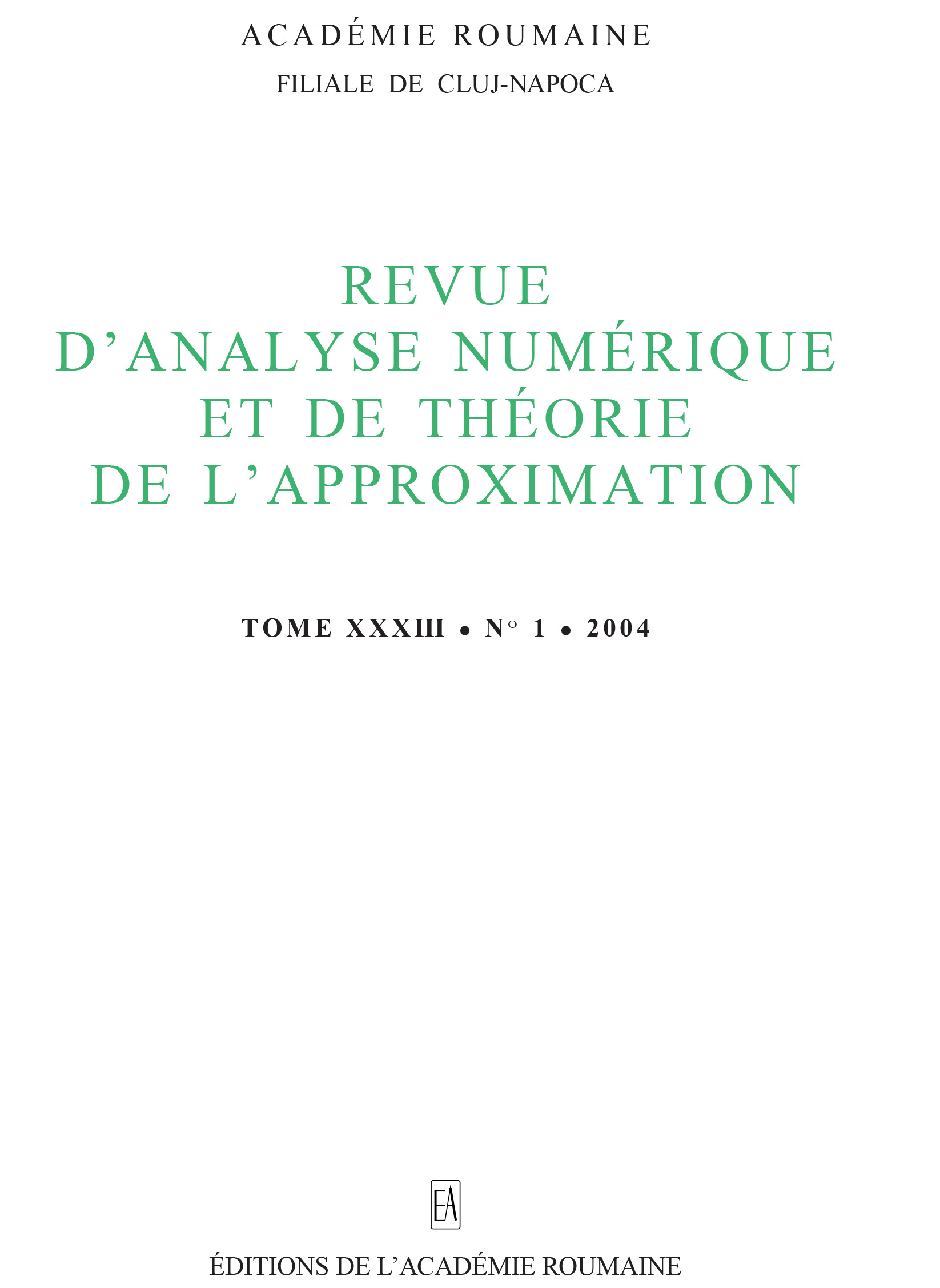On the convergence of iterates to fixed points of analytic operators
DOI:
https://doi.org/10.33993/jnaat331-754Keywords:
analytic operator, method of successive substitutions, Newton's method, fixed point, Fréchet derivative, radius of convergence, simple zeroAbstract
The results in this study deal with the question: given that an analytic operator has fixed point, when is it true that iterates (under the operator) of nearby points converge to the fixed point? We take advantage of the analyticity of the operator to show that it is possible to enlarge the convergence radius for the method of successive substitutions or Newton's method. A numerical example is finally given to show that under our conditions there exists a wider choice of initial guesses than before.Downloads
References
Argyros, I. K., Improved error bounds for Newton-like iterations under Chen-Yamamoto assumptions, Appl. Math. Letters, 10, no. 4, pp. 97-100, 1997, https://doi.org/10.1016/s0893-9659(97)00066-9 DOI: https://doi.org/10.1016/S0893-9659(97)00066-9
Argyros, I. K., Local convergence theorems for Newton's method using outer or generalized inverses and m-Fréchet differentiable operators, Mathematical Sciences Research Hot-Line, 4, no. 8, pp. 47-56, 2000.
Argyros, I. K., A Newton-Kantorovich theorem for equations involving m-Fréchet differentiable operators and applications in radiative transfer, J. Comput. Appl. Math., 131, nos. 1-2, pp. 149-159, 2001, https://doi.org/10.1016/s0377-0427(00)00317-4 DOI: https://doi.org/10.1016/S0377-0427(00)00317-4
Argyros, I. K. and Szidarovszky, F., The Theory and Applications of Iteration Methods, C.R.C. Press, Boca Raton, Florida, 1993.
Brown, P. N., A local convergence theory for combined inexact-Newton/finite-difference projection methods, SIAM J. Numer. Anal., 24, no. 2, 407-434, 1987, https://doi.org/10.1137/0724031 DOI: https://doi.org/10.1137/0724031
Cătinaş, E., On the superlinear convergence of the successive approximations method, J. Optim. Theory Appl., 113, no. 3, pp. 473-485, 2002, https://doi.org/10.1023/a:1015304720071 DOI: https://doi.org/10.1023/A:1015304720071
Gutiérrez, J. M., A new semilocal convergence theorem for Newton's method, J. Comp. Appl. Math., 79, pp. 131-145, 1997, https://doi.org/10.1016/s0377-0427(97)81611-1 DOI: https://doi.org/10.1016/S0377-0427(97)81611-1
Kantorovich, L. V. and Akilov, G. P., Functional Analysis, Pergamon Press, Oxford, 1982.
Ostrowski, A. M., Solution of Equations and Systems of Equations, Second Edition, Academic Press, New York, 1966.
Rheinboldt, W. C., An adaptive continuation process for solving systems of nonlinear equations, Polish Academy of Science, Banach Ctr. Publ., 3, pp. 129-142, 1977,https://doi.org/10.4064/-3-1-129-142 DOI: https://doi.org/10.4064/-3-1-129-142
Rheinboldt, W. C., On a theorem of S. Smale about Newton's method for analytic mappings, Appl. Math. Letters, 1, no. 1, pp. 69-72, 1988, https://doi.org/10.1016/0893-9659(88)90179-6 DOI: https://doi.org/10.1016/0893-9659(88)90179-6
Smale, S., Newton's method estimates from data at one point, in: R.E. Ewing, K.I. Gross, and C.F. Clyde, editors, The Merging Disciplines: New Directions in Pure, Applied and Computational Mathematics, Springer-Verlag, New York, 1986, pp. 185-196, https://doi.org/10.1007/978-1-4612-4984-9_13 DOI: https://doi.org/10.1007/978-1-4612-4984-9_13
Wang, D. and Zhao, F., The theory of Smale's point estimation and its applications, J. Comput. Appl. Math., 60, pp. 253-269, 1995, https://doi.org/10.1016/0377-0427(94)00095-i DOI: https://doi.org/10.1016/0377-0427(94)00095-I
Ypma, T. J., Local convergence of inexact Newton methods, SIAM J. Numer. Anal., 21, no. 3, pp. 583-590, 1984, https://doi.org/10.1137/0721040 DOI: https://doi.org/10.1137/0721040
Downloads
Published
Issue
Section
License
Copyright (c) 2015 Journal of Numerical Analysis and Approximation Theory

This work is licensed under a Creative Commons Attribution 4.0 International License.
Open Access. This article is distributed under the terms of the Creative Commons Attribution 4.0 International License, which permits unrestricted use, distribution, and reproduction in any medium, provided you give appropriate credit to the original author(s) and the source, provide a link to the Creative Commons license, and indicate if changes were made.










